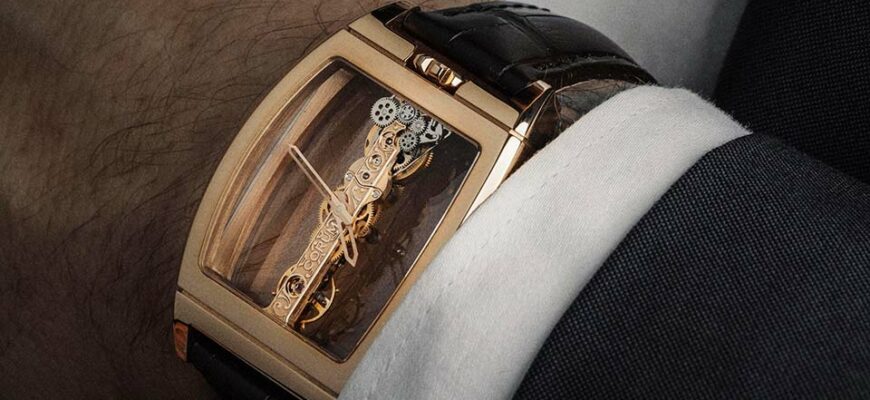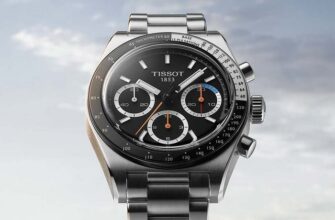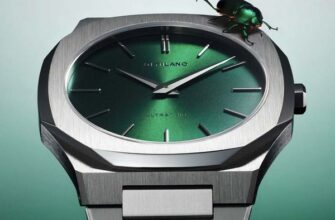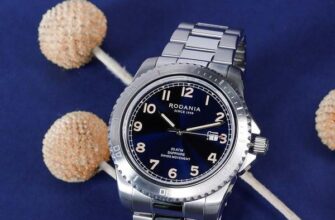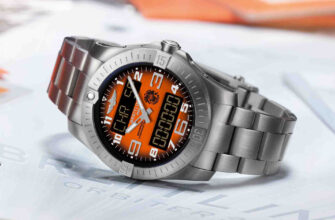The advent of inexpensive sapphire crystal technology in the 1990s was an important factor in modern watchmaking. To a certain extent, the Golden Bridge model released by Corum, a watch with which few others can compete in transparency, became a kind of impetus for the development of these technologies. Let's remember how it all began.
The story goes that the idea of the "Golden Bridge" was born and embodied thanks to the meeting of the co-owner of Corum René Bannwart with the Italian self-taught watchmaker, and later the co-founder of the Academy of Independent Watchmakers (AHCI) Vincent Calabrese. Calabrese in those years worked as a boutique manager in Crans-Montana, a famous ski resort in the heart of the Swiss Alps. His wealthy clients often asked about personalized watches, which prompted Calabrese to create a movement that would be easy to "customize" while being "lightweight" and interesting in design. And he also initially planned to use it in watches devoid of the usual dial, that is, exposing the watchmaker's work, the mechanism, to show off in all its glory.
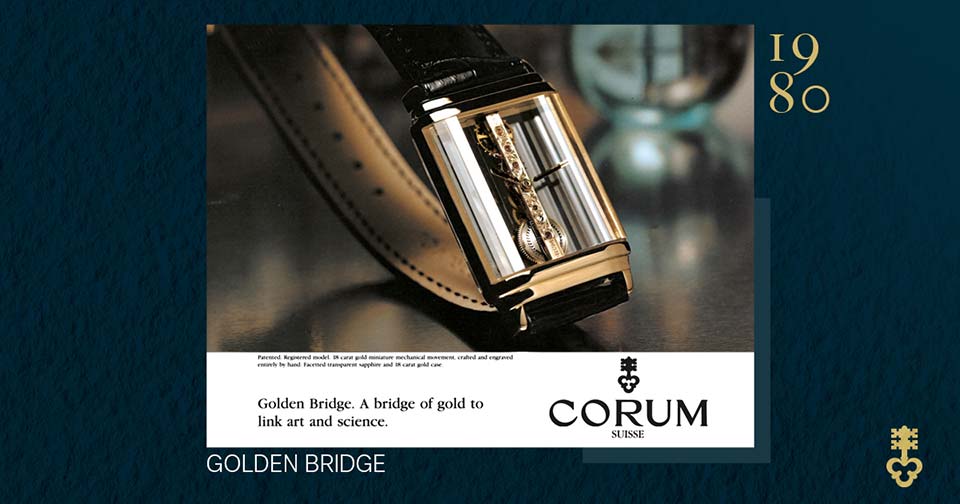
Calabrese presented its single-bridge watch at the Salon International des Inventions de Geneve in Geneva and received a gold medal. The inventor chose Corum as a partner to bring the concept to reality, given that Corum, founded in 1955, was dynamically developing its own design ideas, and Bannwart himself was very "artistically" minded, like Calabrese.
Their partnership was very successful. The famous elongated, thin Golden Bridge movement was difficult to mass-produce, and both Calabrese and Bannwart wanted to make it from 18 carat gold. “The reason for this choice was simple,” recalled Calabrese. “They wanted to make the mechanism unique. Before us, no one had ever made movements for wristwatches out of gold.” Of course, the choice of metal for the manufacture of the mechanism gave the name to the new watch - Golden Bridge.
The Golden Bridge became an iconic watch both for Calabrese, whose idea to bring the master watchmaker “to the surface” and his work for all to see, was embodied, and for Corum, whose desire to prove that mechanics and art can and should coexist harmoniously realized in such a utilitarian object as a watch.
The case of serially produced "Golden Bridges" initially consisted of two hand-cut sapphire crystals of a rather difficult shape to describe, these two glasses were held between two gold parts of the case and were fixed with four gold screws. Golden Bridge No. 001 was handed over to the International Museum of Watchmaking (MIH) in La Chaux-de-Fonds on September 25, 1980, and this piece is on display there to this day.
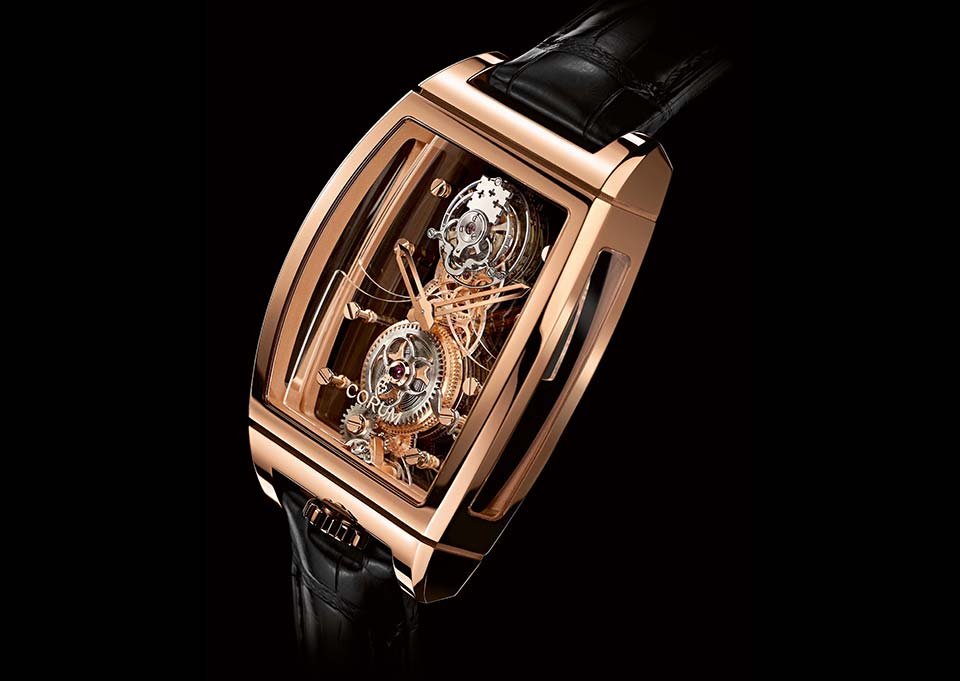
In order to appreciate the innovativeness of this watch, launched in 1979 at the height of the so-called quartz crisis, and to understand the difficulty of producing watches with a "highly transparent" case at that time, it is useful to know a little about the manufacturing process of synthetic sapphire glass. Used to create watch glass of the desired size and shape, one piece of synthetic colorless corundum is grown in a flame for about 15 hours - nature takes about 100 years to do this.
Glass making begins with cutting the original synthetic sapphire with a diamond tool. Cutting corundum into pieces takes from five to eight hours. The blanks are then ground to the desired shape with an accuracy of two hundredths of a millimeter, after which they undergo a series of operations performed by highly skilled craftsmen: leveling the thickness, shaping the outer surfaces, chamfering corners, spherical or cylindrical recess and processing, polishing, cleaning and quality control. Each shape and size of sapphire glass requires separate equipment, and in most cases the necessary machines could not be purchased - they were developed for a specific customer.
In 1979, sapphire glass was not used as regularly as it is today. So when Seitz AG managed to create such a perfect faceted crystal with a crown hole (drilled with precision diamond tools and also water-resistant with a gasket, all without sacrificing clarity), it was nothing short of an industrial marvel. Reproducing that original crystal would be much easier today, as cutting and polishing technology has come a long way since then - but that's today.
Now is the time for a man to appear in our Golden Bridge play, whose name should be on a par with Nicolas Hayek and Jean-Claude Biver. Severin Wunderman founded Severin Montres in 1972 in Switzerland. The company's bestseller was a Gucci licensed watch, and the brand allowed Wunderman to practice his own creative business approach. With Bannwart out of control of Corum, Corum was put up for sale in the late 1990s, while Gucci decided to take over the watch business and stop licensing, and Wunderman (who now had both experience and funds) decided to buy the company, inspired by its products, especially the Golden Bridge.
Wunderman decided to relaunch the Golden Bridge just in time for Corum's 50th anniversary in 2005, and undertook a surprisingly large project to change the movement to make it more reliable for the demands of the modern era, while maintaining the integrity of this piece of watchmaking art.

Wunderman was of the opinion that the time required a clear redefinition of the size of men's and women's cases, as in the 2000s watches for men increased in size by leaps and bounds. The upgraded hull consisted of four parts instead of the previous two: one at the rear, one at the front, and one on each side. Sapphire crystals were set in a gold or platinum frame. The new design made the case much more resistant to shock and emphasized the straightness of the movement. Thanks to his artistic ability, Wunderman was able, after the first limited edition, to produce many variations of the "Golden Bridge" using precious metals and precious stones.
The sleek Caliber 13 gave way to the more reliable CO 113 just in time for the brand's 50th anniversary, with Wunderman assisted by Vaucher Manufacture in Fleurier. The original mechanism was distinguished by its excellent design, but it was not without a number of technical problems, and it was also impossible to “develop” it, except for decoration - it was impossible to add, say, a tourbillon, and where without a tourbillon in the 2000s?
An updated, more reliable and more precise mechanism opened the door to creativity and as a result, to the emergence of many options, the first of which we saw in 2009: the Ti-Bridge. In this model, the movement is placed horizontally, the parts are made of titanium, giving the watch a very technical and modern look. In 2010, Vaucher engineers were finally able to add a tourbillon made primarily of silicon, which Corum claimed had the world's smallest tourbillon cage at the time, measuring just 8,5mm in diameter. A limited edition of 33 pieces was produced with hand-engraved gold caliber CO213.
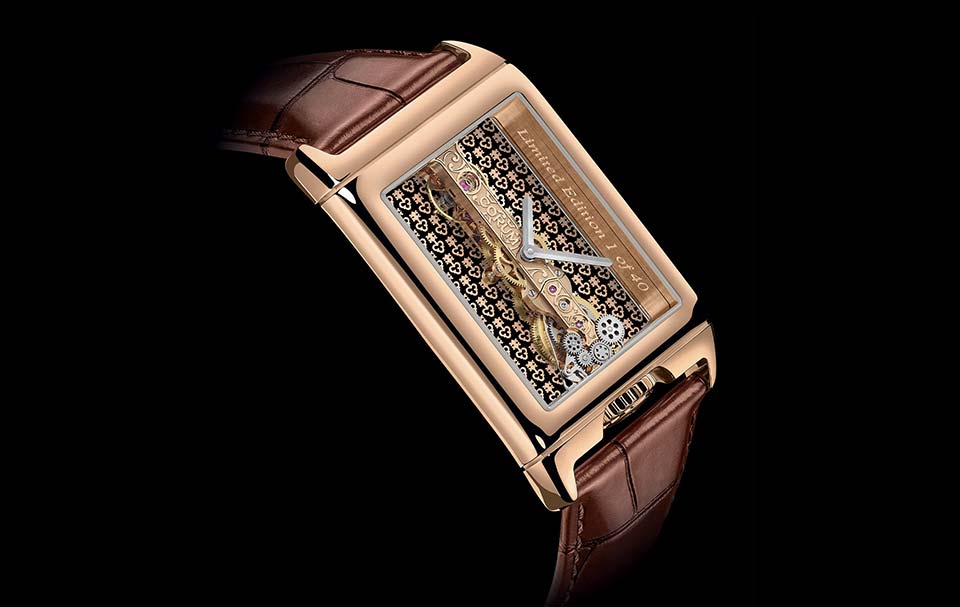
An interesting self-winding version of the Golden Bridge appeared in 2011, and in 2014 some very artistic versions of the watches were added with hand-engraved sculpted dragons or phoenixes. In relatively recent versions, Corum designers pay attention to the shape of the Golden Bridge case, the brand produces round versions of the Golden Bridge Ronde and rectangular versions called Golden Bridge Stream and Golden Bridge Rectangle.
While the look of the Pont d'Or continues to change, one thing remains the same - the amazing ability of this transparent watch to showcase the watchmaker's art as intended by its creators, Calabrese and Bannwart, is well worth it.
